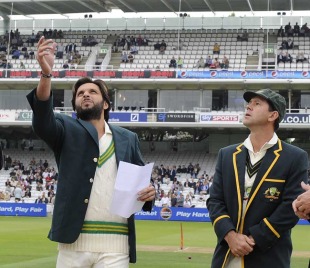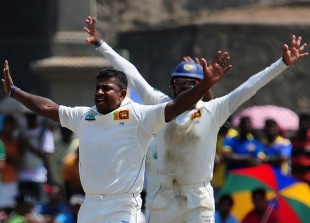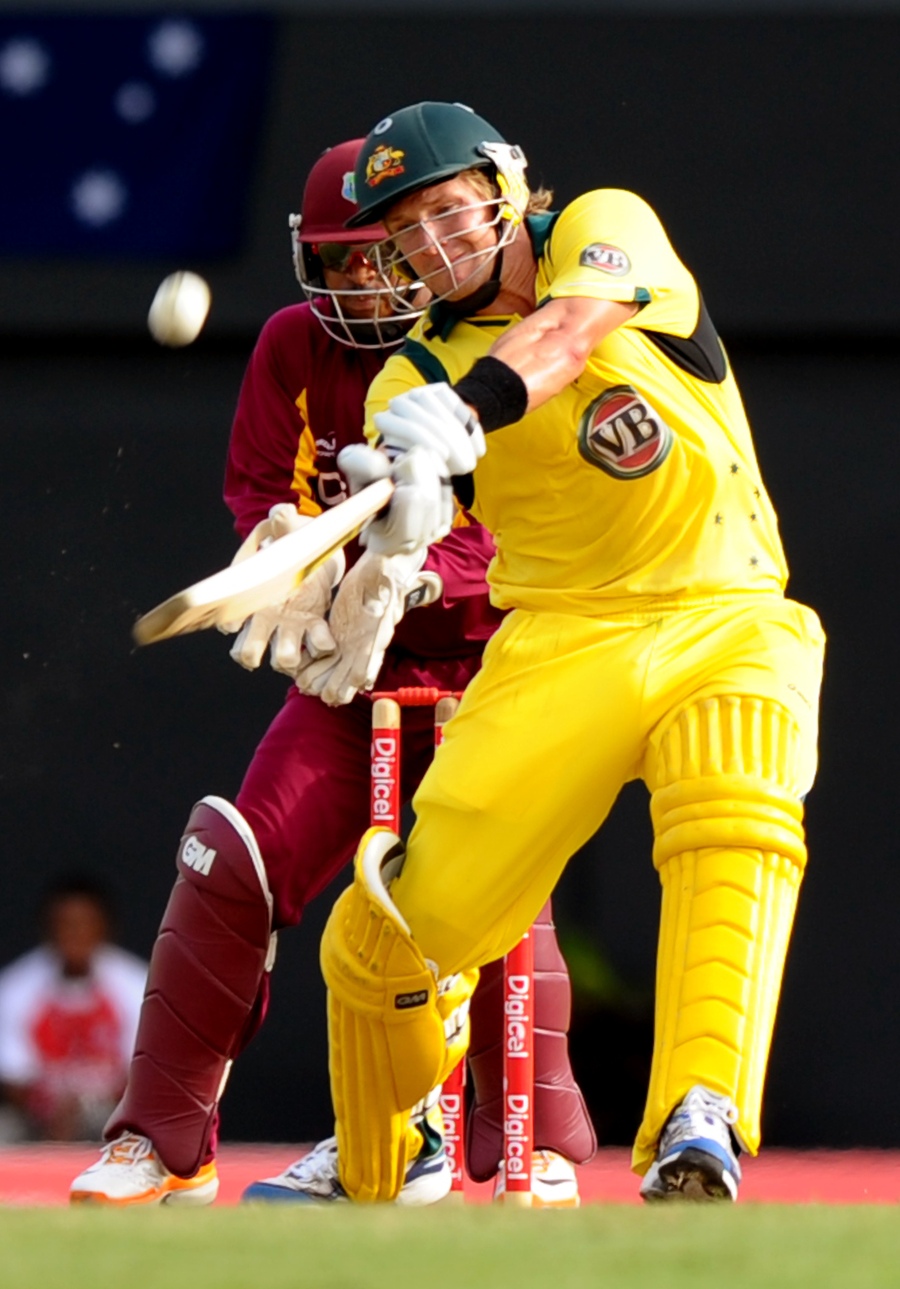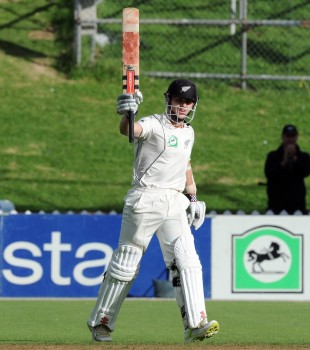South Africa 474 for 9 dec (Petersen 156, Duminy 103, Gillespie 6-113) and 189 for 3 dec (de Villiers 68) drew with New Zealand 275 (Guptill 59, Philander 6-81) and 200 for 6 (Williamson 102*, Morkel 6-23)
An outstanding rearguard 102 from Kane Williamson negated Morne Morkel's career-best figures of 6 for 23, as New Zealand held on for 80.4 overs to draw the third Test at the Basin Reserve. South Africa gifted Williamson two lives and the umpires one, but a flawless last session, much of it in the company of a courageous Doug Bracewell, ensured his side could glean positives from a difficult series, though they lost 1-0. New Zealand ended at 200 for 6, 189 short of the target they never attempted.
The sparse Wellington crowd cheered every wicketless delivery, as the full day's quota approached. Hampered by the loss of Ross Taylor, New Zealand had only nine wickets to play with, but Williamson and Bracewell, who played out 19.1 overs together ensured Mark Gillespie and Chris Martin were left unused. The Test had one final twist when the new ball became available with one over to bowl, but Vernon Philander could not break Bracewell, proving there were some things even he can't to with the ball, despite having enhanced his fearsome reputation with each game this tour.
South Africa added four clear-cut chances in the second innings to the five they'd missed yesterday. Alviro Petersen spilt Williamson on 10, diving to his right at gully only to palm it to the ground. The drop was particularly painful for Petersen who had appeared to take a low chance cleanly several overs before, only for the third umpire to deem Williamson not out, to South Africa's surprise. AB de Villiers was the next culprit, dropping a low chance at second slip with Williamson on 22. Dean Brownlie then got a life from Graeme Smith, though he didn't capitalise, adding no more runs before being dismissed and Bracewell was shelled late in the day, again by de Villiers at second slip.
If Williamson had been fortunate to survive till tea, his batting through the final session was pure technique and application. Not having to contend with hooping outswing or biting turn, Williamson tuned his mind solely to blunting South Africa's favourite weapon in the third Test: bounce. Picking the lifters early, he'd duck everything South Africa pitched in their own half. If the balls were fuller - just short of a length - he'd climb on his tip-toes, elbows always high, and punch the ball down into the off side. Yorkers came into vogue later in the session, but having seen Morkel unleash hell with those at the other end, he was prepared. He dug them out dutifully, turning down runs into the outfield to keep himself on strike.
New Zealand's now-abandoned four-seamer policy had been tried partly because Doug Bracewell's first class career had promised runs at Test level. Until his 59-ball 20 here, he'd barely distinguished himself above Chris Martin as a batsman. Bracewell flirted dangerously outside off stump twice; once off Morkel and once off Steyn, and was dropped in the slips once, but otherwise willow met leather comfortably whenever a stroke was offered. He even ventured two consecutive fours either side of the stumps off Marchant de Lange in the last half hour, as South Africa grew desperate. With Bracewell's defence seeming more secure with each stroke, Williamson no longer bothered shielding him from the strike towards the end.
Williamson's 228-ball vigil had begun when Brendon McCullum was dismissed in the fifth over. With Taylor undergoing surgery, Williamson had been promoted to No. 4, and his inexperience showed, as both he and Martin Guptill shut down their scoring almost completely for the duration of their partnership. Williamson's first ten runs came from 55 deliveries, and with South Africa able to pool all their resources into attack, it was only a matter of time until the wicket came. Guptill edged Morkel to gully soon after lunch.
Positivity eventually found its way into Williamson's game, and he and Dean Brownlie resisted, making their second 50-run stand of the game. A serene straight drive off Vernon Philander was followed by consecutive sweeps to the fence off JP Duminy, and Williamson flew towards his second fifty of the series as the field relaxed somewhat. Kruger van Wyk contributed another gritty knock, holding the visitors at bay for 80 deliveries either side of tea, and was perhaps unlucky that Morkel stuck out his left hand on his follow-through to snatch a bludgeoned drive. He partnered Williamson for the longest time of his team-mates, as their stand ate up more than a quarter of the overs New Zealand batted out.
South Africa were hamstrung by a pitch that had flattened out significantly throughout the Test, but would have been disappointed that in spite of all the missed chances, only Morkel was able to take wickets. Philander was threatening, as always, sticking methodically to the back-of-a-length and off-stump line that had reaped him so much success in the series, but having suffered at his hands so severely, New Zealand finally seemed capable of combating his threat - even if the pitch did much of this for them. Steyn was unlucky, as he has been all series. Most of the dropped chances in the match were off his bowling, and Steyn swung the ball early, at good pace, for no reward.
Three of Morkel's wickets came from searing yorkers. McCullum couldn't get bat to one that would have hit leg stump, Brownlie let one slip beneath his bat and Daniel Vettori barely had time to register being at the crease before Morkel bowled him first ball. Late in the day, Morkel tried everything to dismiss Williamson and Bracewell, but the batsmen were resolute. An over of short balls was followed by one where he pitched full, but nothing worked.
Smith vexingly wasted thirteen overs by using JP Duminy, who never looked like breaking through, though among his other regrets may be batting for too long at the start of the day. Though de Villiers made good use of the time they kept New Zealand in the field, making a 49-ball 68, perhaps 388 was far too conservative a lead, given New Zealand had not passed 300 in the series



 Shane Watson and Michael Hussey both scored half-centuries to set up a comfortable eight-wicket victory for Australia in the first Twenty20 in St Lucia. Kieron Pollard's 20-ball fifty, the fastest by a West Indian player in a Twenty20 international, proved to be in vain as the target of 151 was easily overhauled by the Australians with 11 balls to spare.
Shane Watson and Michael Hussey both scored half-centuries to set up a comfortable eight-wicket victory for Australia in the first Twenty20 in St Lucia. Kieron Pollard's 20-ball fifty, the fastest by a West Indian player in a Twenty20 international, proved to be in vain as the target of 151 was easily overhauled by the Australians with 11 balls to spare. 


















